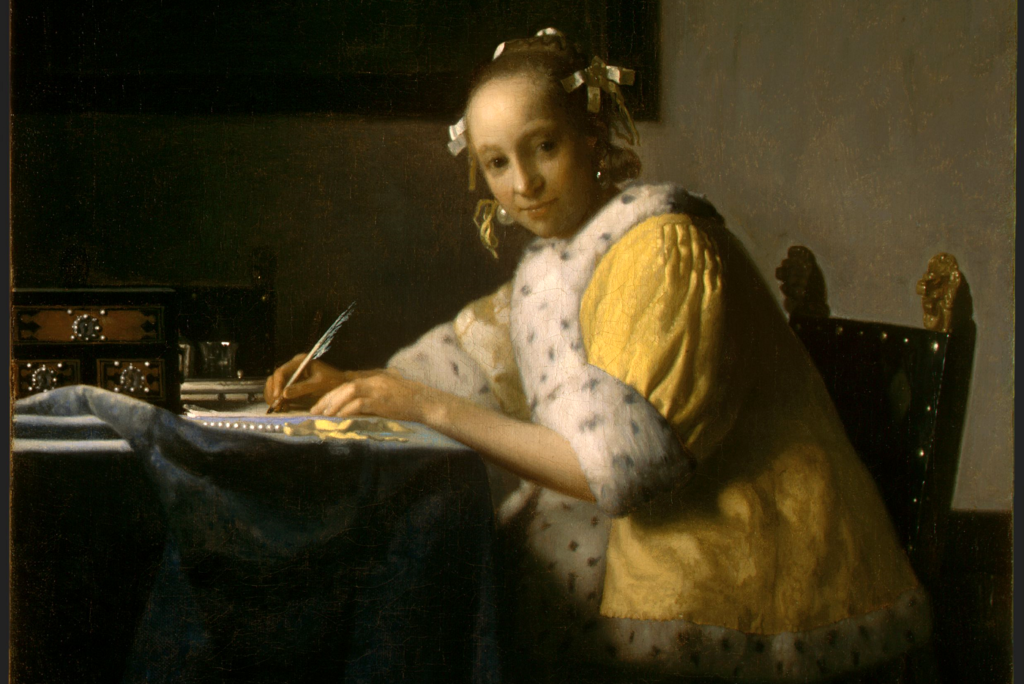As recent studies have shown, and numerous anecdotal accounts confirm, the mainstream English department is in declining health, and unsure of how to help itself get better. Many previous commentators have laid bare the structural sins of the discipline: hyper–politicization, specialization to the neglect of central texts and practices, the out-sourcing of core and gen-ed classes to ill-used graduate students and part-timers, and so on. What the English department now needs is a positive proposal. We need once again to find what it is we can and should be doing. What is the life of our discipline, and how can we best live it?
This question has been asked and answered before, but the theories of the past will not suffice to guide us into the future. Looking at the last century of literary study, we have much to learn from the formalist “New Criticism” that developed in Great Britain and America, as well as the structuralist, deconstructionist, and historicist movements that followed it, but none of them alone, or any eclectic combination of their doctrines, will now do for us. Instead, we need a fresh model that can restore the heart of the discipline to us—what is literature?—and give us principles for drawing effectively from the older theories.
My thesis is that literature (and all art) must be reconceived as personal if it is to flourish again. We need to come to it as we come to other persons. Once we take it seriously as analogically related to us, its human makers, the politics, history, psychology, and economics of literature—all its theoretical dimensions—will fall into place.
My thesis is that literature (and all art) must be reconceived as personal if it is to flourish again. We need to come to it as we come to other persons.
Start your day with Public Discourse
Sign up and get our daily essays sent straight to your inbox.The Work of Creation
Now, what are the grounds for thinking of literature as personal? Perhaps surprisingly, some of them begin to appear as early as Genesis. In the primeval depths of the second creation narrative, we find God creating Adam, and then Eve: before the man’s making, “no [cultivated] plant of the field was yet in the earth,” and there was no agriculturalist “to till the ground” (Gen 2:5). The earth is waiting for Adam to farm it, even before he appears. When Adam is created, he is brought into a world with work ready to hand, soil ready to plow and sow, growth waiting for him to steward it. His task, as we see a chapter later, will be “to till the ground from which he was taken” (3:23). In parallel fashion, Eve, whom God formed from a part of a human torso, will now form new life within her own torso.
Both humans—all humans—exist to do the work of making, and at least two important insights emerge from the way their work is described. First, that human making is analogous to divine making. We make in a similar way, and with the same materials from which we were made. Second, the narrative suggests that humans, like God, make things that are in some ways like themselves: living things from the ground, other humans from the womb. In some sense, humans also make things in their own image, just as the Creator did and does. According to the anthropology of Genesis, there will be something personal about everything to which persons set their hands.
This is of course not to say that our works may be boiled down to our intentions. As in the divine creation, each of our artifacts will be like us in some ways, while also standing apart from its makers. There remains a space of “freedom,” in which the thing we make (like our children) can and will define itself beyond, and even against our best laid plans. To make something with my hands or with my mind is to give it its own kind of independent life. Hence the language of analogy, rather than identity: the objects of human making will differ from their makers as person from person.
As a result, we ought to expect art, that most elevated form of artifice, to be particularly personal. This makes sense in light of the process through which art emerges: humans encounter the world, then naturally want to make images of it, in different media. The human being is a mimetic animal, says Aristotle, and we imitate what we experience by making songs about it, paintings or sketches of it, verbal descriptions of it, and so on. Those images are not, of course, the things themselves, but rather expressions of what it is like for humans—particular men and women—to experience those things. In literature, especially, our experience adds several dimensions to its objects, including a more explicit sense of causality, historical context and chronology, symbolism, emotional coloring, and more. Literature, then, expresses the world as it meets the mind, or rather, the whole person.
Narrative Truth
Narrative is, by definition, a person’s framing of the phenomena he or she encounters, and thus it gives the world it imitates something personal, a personal setting, and personal characteristics. For Aquinas, truth consists not in the data of reality themselves, but the mind’s adequation, or conformation, to those data. Truth is not something “out there,” but a relationship between person and thing. Good literature arises out of that relationship, telling truths in a personal way, making the world it reflects more personal.
Most basic to the personality of literature is its narrativity—the fact that it is not simply given, but narrated. As the Chicago school of literary criticism brought out nicely in the twentieth century, there is a difference between what actually happened (in history or imagination), and what is said about that happening. The two are often distinguished as “story” and “discourse,” respectively, and the difference between them is the difference personal narration makes.
A great many things happen in the fictional town of Highgate during the span of Jane Austen’s Emma, but her narrator is highly selective about what details she gives us. The data are carefully limited, then set into an order of events and conversations organized in discrete chapters. The chapters, as well as the scenes within them, unfold in a way that brings out an array of causal relationships: Emma’s spoiling at the hands of her father explains her subsequent delusions about Harriet, which then give rise to a set of ill-advised plans, ultimately leading to pain, embarrassment, and the opportunity to learn from her failings and grow. Taken together, this string of events—the plot of Emma—does not feel like a collection of happenings caught by hidden camera in Highgate, but an intelligent, feeling mimesis of those happenings. We care about the novel, as about any work of literature, precisely because of its personal framing, because it bears the marks of the author’s consciousness, even as it also transcends that author’s limits.
Appreciation, Then Analysis
From its personal character, which derives in part from the personhood of the author and narrator, comes whatever dignity the work of art has. Its dignity makes certain demands on us as readers, and these demands must be the starting points of a good literary criticism.
They are analogous to the requirements other human beings impose on us, simply by virtue of their personhood: first and foremost, that we allow the work of art, be it novel, play, or poem, to present itself on its own terms. Just as the dignity of another person requires that I let her speak, let her show herself and account for herself as she sees fit, so the dignity of a piece of literature leads me to give it space for self-presentation. My first responsibility is to appreciate its form—the way in which it gives itself to me—trying insofar as I am able not to impose my judgment or antecedent frameworks. What is this poem? How does it want to be read? This first stage of response is largely a patient, appreciative reception of form, and the subjective experiences created by form, in all its many dimensions. It is this stage that was so brilliantly emphasized by the New Critics and the generation or two of descendants who followed them.
It cannot, however, be the only stage of response. Just as another person inexorably leads me to think about him—not just who he appears to be, but why he appears that way, and what must be the ramifications of that appearance—so works of literature elicit our analysis, and even our critique. Everything permissible in ordinary personal relationships is also permissible in our relation to art. I cannot simply take in the form of The Wasteland, or Wordsworth’s Prelude, without wanting to historicize it (how did he come to write such a line in this way?), moralize about it (is that allusion potentially damaging or deceptive?), and politicize it (what kind of social influence must the poem’s framing bear?).
These reactions are natural, and the thought processes that follow from them are appropriate, just as they are in the case of every person we meet. Indeed, the very dignity of persons requires rational engagement: each man or woman I know desires not only to be experienced but understood, and the more honest and reflective ones among them must even admit the possibility of my seeing things about them that they don’t see themselves. We are each both more and less than we intend to be. On the personal model, then, literary criticism has got to examine, and even judge, every work of fiction in some of the same ways practiced by the twentieth century’s later schools—deconstruction, for example, and New Historicism.
Moral Boundaries
At the same time, the personal model imposes clearer moral boundaries for the critic. Because a work of literature has its own stand-alone dignity, there are a number of things I ought not do to it.
First, as with real persons, I shouldn’t reduce it to a mere product of its historical conditions. We persons are more than where we came from, as is any literature worth its salt.
Second, even where I heartily disapprove of a work, I owe it the space to be itself, regardless of my judgment, and thus live on to be judged again by others, perhaps more fairly. Many of us find Nabokov’s Lolita immoral, and the Harry Potter series tedious, but these books are not merely what we see in them right now, and we should not speak as though they are.
Third, and perhaps most importantly, works of literature, like the persons who write and read them, deserve not to be instrumentalized. That is, Kant’s dictum—treat another “as an end, and never simply as a means”—applies not only to persons, but the art created by persons. A Frost or Rilke lyric may serve a certain purpose in my article, lecture, or class discussion, but I owe it to them to speak in a way that acknowledges their dignity and integrity. They are not, as some cultural-studies perspectives make them out to be, reducible to our purposes.
This is only a starting point, but a complete ethics of reading can be built on the recognition of the personality of literature. If it really is analogous to persons, we must treat it differently than we often do. A personal theory of literature can draw together much of the good we have received from the last century of criticism, while providing us with clear principles for refusing what is not good.
Here, it is worth pausing to ask: how could today’s readers, not to mention today’s English departments, agree to a common, personal way of approaching literature, when there is so much bitter disagreement about what a person even is? There are many thorny distinctions and disputed questions in theory (When does a human become a person? What is the relationship between our sexed bodies and our souls? What does it mean to be a self?), but the suggestions above rely on the fact that we humans have more in common in practice than in theory. The things we generally want of others, and tend to give to those we love—the opportunity to be ourselves, the chance to transcend our conditions, the assurance that we will not be made into the tool of another, and so on: these may be fresh practical starting points for thinking about art together, regardless of our previous theories.
Certainly, the task will not be easy. For contemporary English departments, the path forward will demand deeper reflection about what we really want as humans, and a reaffirmation of what it truly means to be a person. It will also require recollecting the dignity of the ground we till, the fruit of the earth, and the work of human hands.













